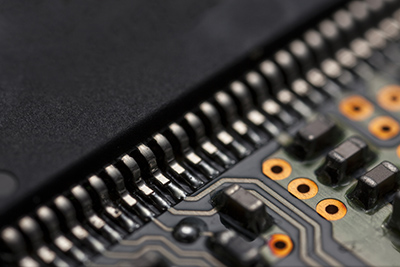Zener diodes are common electronic components found in a wide range of devices. One example is a surge protector, where diodes help reduce transient voltage spikes. The design of Zener diodes allows the current to flow backward in low reverse breakdown voltage. Yet, some applications need a maximum voltage and current that the Zener diodes won't handle. So, the high current Zener diode becomes helpful at this point. Read on to understand the features, applications, and current specifications of the high current diode.
Contents
What is a High Current Zener Diode?
A high current Zener diode is a special diode with a large capacity that works for efficient power handling. It has the features required to handle high voltage and current in the reverse direction. The N153 series has a complete range of high current diodes made for voltage regulation and high current. We get a diode’s adequate current handling capacity by dividing its wattage by its voltage rating. To increase the power-handling capacity of a Zener diode in electronic theory, join two diodes in series. Though this method seems reasonable, it has limited application in practice. The reason is that they do not share equal breakdown voltage.
Furthermore, a high-power diode has proven to be effective in current handling. The Zener diode, which people use as voltage reference and voltage stabilizer for low-current applications, differs from traditional semiconductors of electronic components. The reason is that it withstands reverse voltage. When current flows through it in reverse bias, it does not block or cause damage. It is for as long as the reverse current doesn't pass the thermal limits. But it fails if there's excessive power dissipation. Also, a Zener diode helps make a reference voltage at the precise Zener voltages. Though the production of high-power diodes is frequent, they are usually scarce. They are also stud-mounted. Lastly, they are hard to install on a heatsink, and mounting hardware is hard to find.

(High Current Zener Diode)
Special Offer: Get $100 off your order!
Email [email protected] to get started!
Features of a High Current Zener Diode
Earlier, we mentioned that a high current Zener diode has a large capacity for efficient power handling. The features of high current diodes make them cope in harsh operating conditions. These conditions could be either vibration or shock. The engineers built the full series of diodes with a high clamping voltage to increase clamping ability. Also, they have corrosion-resistant external surfaces and solderable terminals. Their cavity-free glass-passivated junction reduces leakage and increases reverse voltage resistance. Here are a few of the key features of a high current diode.
- Voltage regulation over an expansive temperature and current range.
- Low Noise.
- Anode to case standard polarity.
- Sharp Knee Point.
- Temperature Coefficient and Low Dynamic Impedance.
With the high current Zener diode, we get a stable voltage than with a simple diode. Again, they prevent voltage regulation protection in a wide range of oil drilling, power grid, and alternative energy. Other features include a low forward voltage (VF max = 1.5 V) and 50 watts (0.5 W/°C above 75° C) power derating. Furthermore, these diodes are in 46 different voltages. They are in a wide range of about 6.8 V to 200 V. The operating temperature range of the devices is -65 °C to +175 °C.

Source: A Simple Zener Diode
The Voltage and Current Specifications of a High Current Zener Diode
Every electronic circuit consists of current, voltage, and resistance. However, the fundamental relationship between voltage, resistance, and current in AC circuits and basic electronics is based on Ohm's law. However, when in forward-bias mode, the diode operates similarly to a normal diode. It also has a steady voltage rating of between 0.3 and 0.7 V. A small leakage current flows when connected in reverse mode, which is common in most applications. However, the so-called Zener voltage of a high current diode is up to 200V.

(Voltage and Current)
Also, about the current specifications, we get the maximum allowable current through a Zener diode. The formula is I = P/V. In this case, I = current, V = Zener voltage rating, and P = Zener power rating. For instance, a 30V 2W carries a maximum continuous current of 0.067A. However, keeping the load current to no more than 0.7 of the rated limit when using a Zener is important. So, you shouldn't use the 27V Zener at more than 26mA. It is also preferable to use a lower current. But make sure the Zener current is greater than 10 percent of the maximum current. If it is not greater, the diode for voltage regulation will suffer.
More Facts About Voltage and Current Specifications
- We measure voltage in volts, and it has the letters V or E. These letters stand for voltage or electrical energy, respectively.
- Current is a basic concept of the continuous flow of charge around the electronic circuit.
- A current flow is a mix of hole and electron flow through a circuit.
High Current Zener Diode Application
Here are some of the notable applications of the high-power Zener diode.
Solar Panel Output Control

Solar Panel Output Control
We measure the output of a solar panel in watts. A domestic solar panel has around 265 watts. But it varies from as little as 225 watts to more than 350 watts. The solar panel will produce more electricity if it is high, under similar conditions. However, with a high-watt Zener diode, you control your solar panel output without using an expensive or sophisticated controller.
Simple LED Driver

Simple LED Driver
An LED driver is a type of application circuit that provides power to a light-emitting diode. The circuit generates enough current to power the LED without overheating. For the LED to remain in good condition, the brightness must be kept to a minimum. The voltage drop across an LED is nearly constant over a large range of operating current. So, an increase in the applied voltage results in a huge rise in the operating current of the LED. A high-power diode, on the other hand, will be effective in the production of simple LED drivers. It is one of the components that make up a simple, inexpensive, and dependable LED driver.
Conclusion
We must have understood that people use Zener diodes as voltage references and shunt controllers to manage the voltage across the simplest circuit. It conducts when the voltage reaches the diode's reverse breakdown voltage when a Zener diode is reverse biased and connected in parallel with a variable voltage source. However, a high current diode is essential because of excess shunting of current and voltage. Furthermore, feel free to contact us with more questions.
Special Offer: Get $100 off your order!
Email [email protected] to get started!






